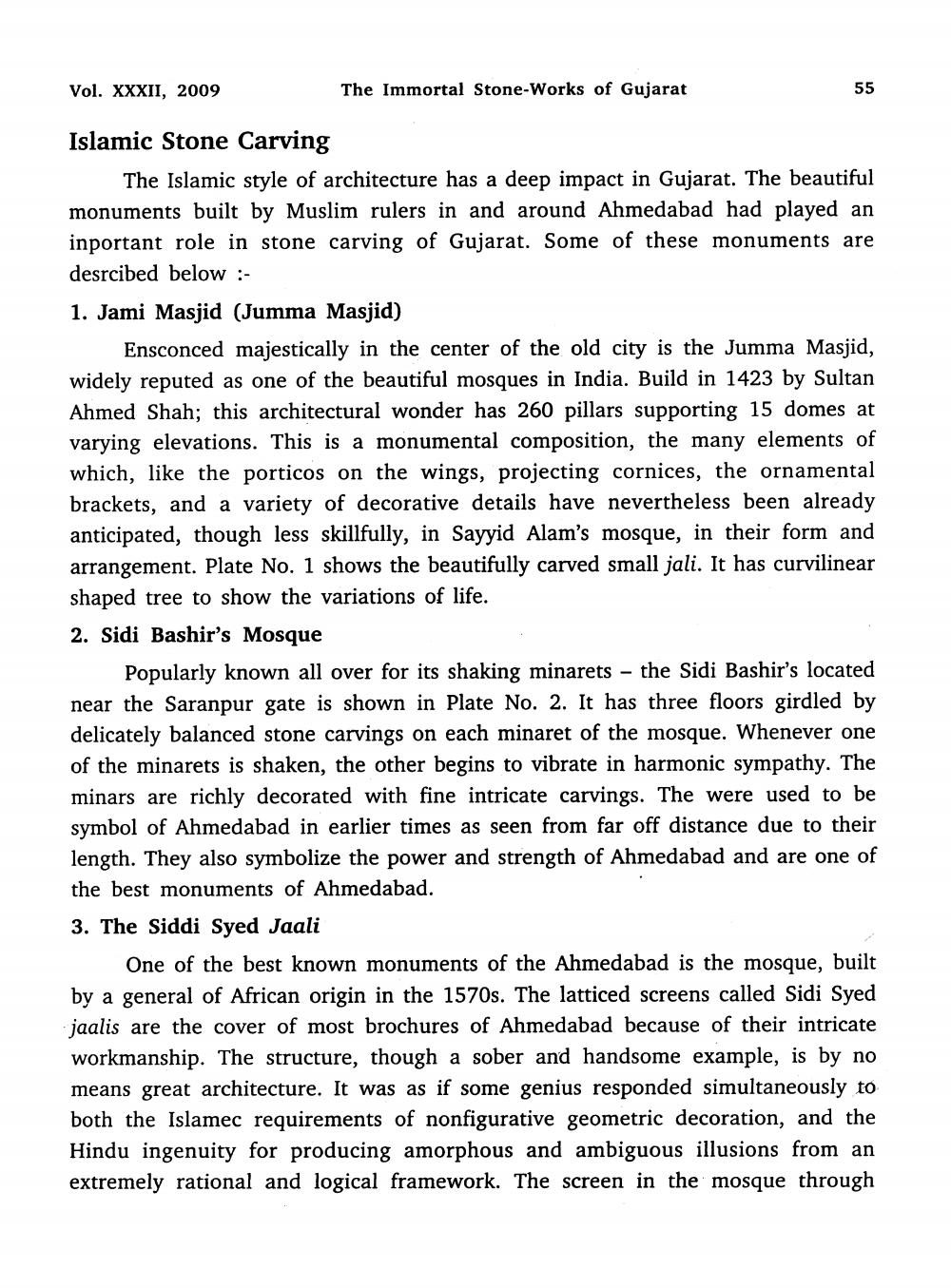________________
Vol. XXXII, 2009
The Immortal Stone-Works of Gujarat
55
Islamic Stone Carving
The Islamic style of architecture has a deep impact in Gujarat. The beautiful monuments built by Muslim rulers in and around Ahmedabad had played an inportant role in stone carving of Gujarat. Some of these monuments are desrcibed below :
1. Jami Masjid (Jumma Masjid)
Ensconced majestically in the center of the old city is the Jumma Masjid, widely reputed as one of the beautiful mosques in India. Build in 1423 by Sultan Ahmed Shah; this architectural wonder has 260 pillars supporting 15 domes at varying elevations. This is a monumental composition, the many elements of which, like the porticos on the wings, projecting cornices, the ornamental brackets, and a variety of decorative details have nevertheless been already anticipated, though less skillfully, in Sayyid Alam's mosque, in their form and arrangement. Plate No. 1 shows the beautifully carved small jali. It has curvilinear shaped tree to show the variations of life.
2. Sidi Bashir's Mosque
Popularly known all over for its shaking minarets - the Sidi Bashir's located near the Saranpur gate is shown in Plate No. 2. It has three floors girdled by delicately balanced stone carvings on each minaret of the mosque. Whenever one of the minarets is shaken, the other begins to vibrate in harmonic sympathy. The minars are richly decorated with fine intricate carvings. The were used to be symbol of Ahmedabad in earlier times as seen from far off distance due to their length. They also symbolize the power and strength of Ahmedabad and are one of the best monuments of Ahmedabad.
3. The Siddi Syed Jaali
One of the best known monuments of the Ahmedabad is the mosque, built by a general of African origin in the 1570s. The latticed screens called Sidi Syed jaalis are the cover of most brochures of Ahmedabad because of their intricate workmanship. The structure, though a sober and handsome example, is by no means great architecture. It was as if some genius responded simultaneously to both the Islamec requirements of nonfigurative geometric decoration, and the Hindu ingenuity for producing amorphous and ambiguous illusions from an extremely rational and logical framework. The screen in the mosque through




